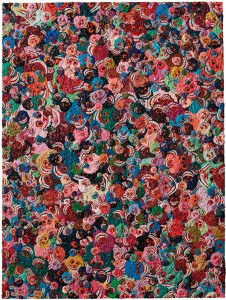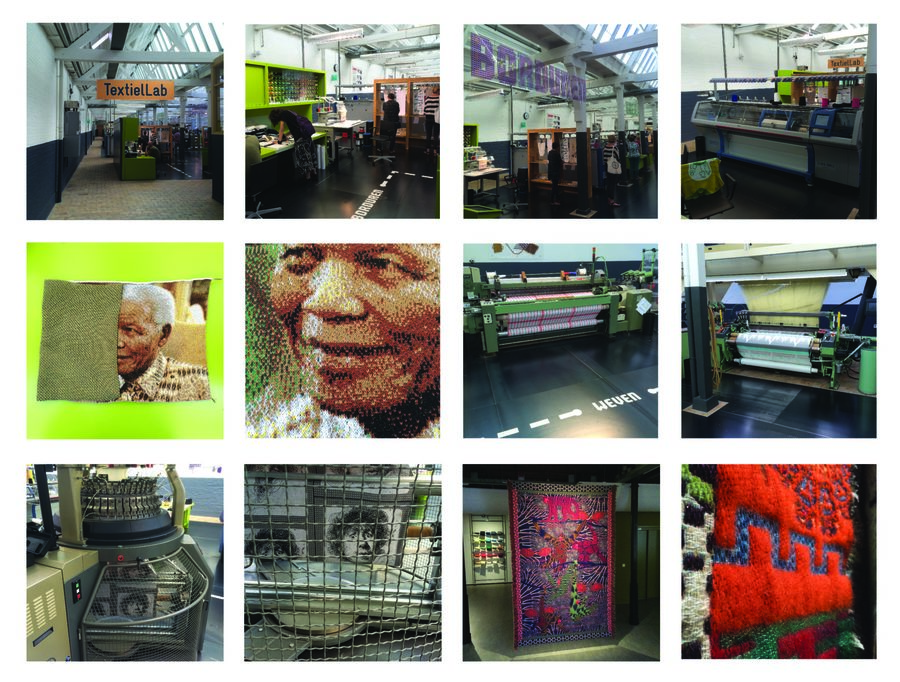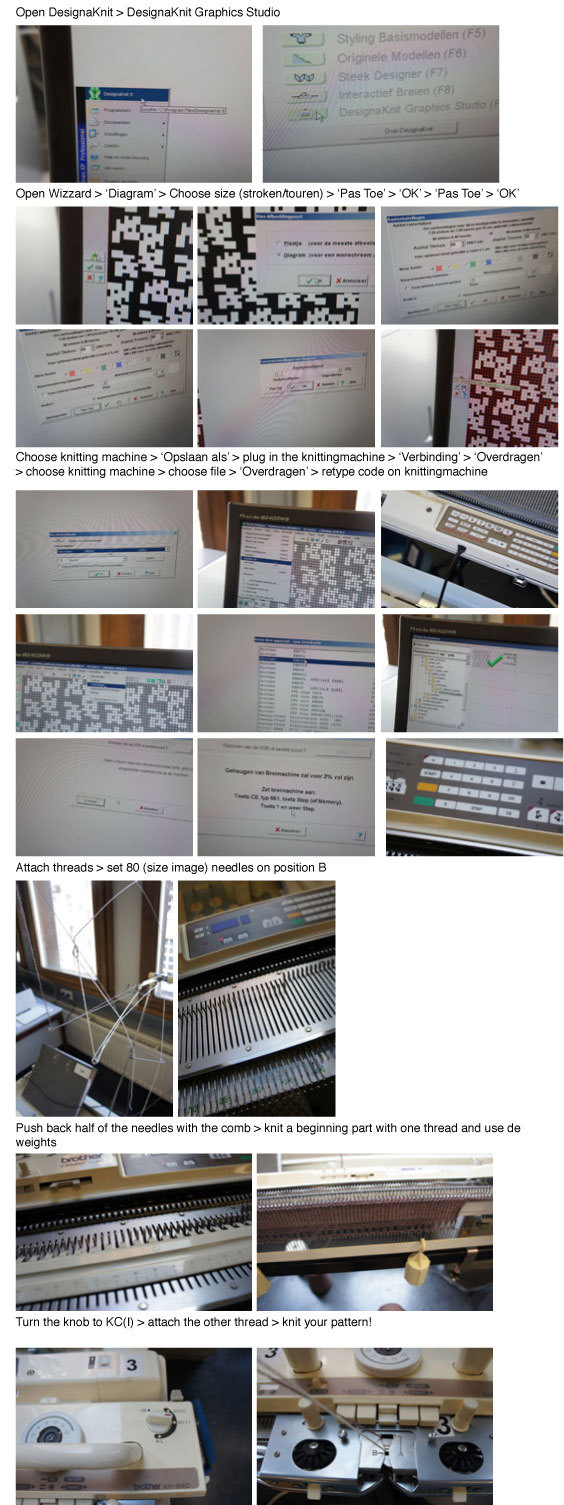Difference between revisions of "User:SvdVelden"
| Line 10: | Line 10: | ||
Product Design. And within this discipline i'm really interrested in ceramics, and especially porcelain. This is a really old craftmanship that is beginning to go away. I'm a handson guy and i like to make things that take time but can look really great. | Product Design. And within this discipline i'm really interrested in ceramics, and especially porcelain. This is a really old craftmanship that is beginning to go away. I'm a handson guy and i like to make things that take time but can look really great. | ||
| − | # What are the tools and media of your craft? | + | ## What are the tools and media of your craft? |
All kinds of tools, but mainly plaster, all sorts of clay/ porcelain, materials to build your mold from (which can also be made with a machine). So 3D printing, 3D CNC milling, regular CNC milling, lasercutting. An oven to bake the stuff, glazing. | All kinds of tools, but mainly plaster, all sorts of clay/ porcelain, materials to build your mold from (which can also be made with a machine). So 3D printing, 3D CNC milling, regular CNC milling, lasercutting. An oven to bake the stuff, glazing. | ||
| − | # What are the borders of this practice? (what new media technologies have arisen / what is its future) | + | ### What are the borders of this practice? (what new media technologies have arisen / what is its future) |
New technologies like 3d printing clay into vases/ pots/ shapes, in all sizes: http://oliviervanherpt.com/3d-printing-ceramics/ | New technologies like 3d printing clay into vases/ pots/ shapes, in all sizes: http://oliviervanherpt.com/3d-printing-ceramics/ | ||
| Line 20: | Line 20: | ||
Air drying shapes that don't need baking anymore? | Air drying shapes that don't need baking anymore? | ||
| − | # Connect to a historical discourse and/or give concrete examples of contemporary practitioners | + | #### Connect to a historical discourse and/or give concrete examples of contemporary practitioners |
Making ceramics in Holland like the people in Makkum, Tichelaar, Delft, De Porcelyne Fles, Cor Unum. It's the old factories that still make the porcelain tablewares | Making ceramics in Holland like the people in Makkum, Tichelaar, Delft, De Porcelyne Fles, Cor Unum. It's the old factories that still make the porcelain tablewares | ||
| − | # Define your position of your practice in relation to newer technologies. | + | ##### Define your position of your practice in relation to newer technologies. |
I want to combine old en new techniques with making tableware or porcelain objects in an innovative way. Take certain steps in the production process and lifting it to another level, and stil hold the craftmanship of making porcelain. | I want to combine old en new techniques with making tableware or porcelain objects in an innovative way. Take certain steps in the production process and lifting it to another level, and stil hold the craftmanship of making porcelain. | ||
Revision as of 09:46, 25 September 2014
Contents
Sven van der Velden
Sven van der Velden - mijn portfolio
Written Assignment
Written Assignment
- What is your craft? (define your discipline, method or approach)
Product Design. And within this discipline i'm really interrested in ceramics, and especially porcelain. This is a really old craftmanship that is beginning to go away. I'm a handson guy and i like to make things that take time but can look really great.
- What are the tools and media of your craft?
All kinds of tools, but mainly plaster, all sorts of clay/ porcelain, materials to build your mold from (which can also be made with a machine). So 3D printing, 3D CNC milling, regular CNC milling, lasercutting. An oven to bake the stuff, glazing.
- What are the borders of this practice? (what new media technologies have arisen / what is its future)
New technologies like 3d printing clay into vases/ pots/ shapes, in all sizes: http://oliviervanherpt.com/3d-printing-ceramics/ The future is a faster way of producing stuff, just skipping steps in the proces of making it. Air drying shapes that don't need baking anymore?
- Connect to a historical discourse and/or give concrete examples of contemporary practitioners
Making ceramics in Holland like the people in Makkum, Tichelaar, Delft, De Porcelyne Fles, Cor Unum. It's the old factories that still make the porcelain tablewares
- Define your position of your practice in relation to newer technologies.
I want to combine old en new techniques with making tableware or porcelain objects in an innovative way. Take certain steps in the production process and lifting it to another level, and stil hold the craftmanship of making porcelain.
Logboek
Hierin staan mijn aantekeningen, tips, en resultaat aan de hand van besprekingen en feedback.
Daarbij alle updates en wekelijkse bevindingen die ik ben tegengekomen en heb gedaan!
Gekozen object voor Fantastic Forgeries
Zhang Huan, Poppy Field No.5, 2010, Collectie De Heus-Zomer
Een schilderij gemaakt met olieverf op linnen. Heldere kleuren aangebracht met een impasto techniek, waardoor de verf met grote hoeveelheden wordt aangebracht en opdroogd als een dikke laag op het doek. Hierdoor ontstaan lagen verf en geven het werk diepte en structuur.
De tentoonstelling brengt de verschillende standpunten van kunstenaars naar voren. Deze artistieke houdingen vormen samen een veelzijdig beeld van de hedendaagse kunstontwikkelingen in Beijing, met Shanghai als de hoofdstad van de Chinese kunst.
Achtergrondinformatie:
Poppy Fields features a series of vividly colored, oil on linen paintings that are uniquely intimate in scale and nature comparted the artist’s iconic large-scale Ash paintings and monumental sculptures. Zhang Huan employs a thick impasto technique and all-over style that engulfs the surface of each Poppy Field painting.
Observed at a distance, each work presents a mesmerizing field of candy-colored pink, teal, lilac and sand, which appears to pulsate with energy. Only upon closer inspection does each burst of color transform from the abstract into figurative. Tiny faces with round eyes and wild Cheshire grins become evident in close view, a reference to ancient Tibetan dance masks.
Skulls are a recurring image in Zhang Huan’s work and stem from the artist’s early explorations in performance, inspired by the body and human form. In 2007, the artist completed his Skull series, large-scale paintings made of incense ash collected from sites of Buddhist ritual and ceremony. Many paintings were titled Renaissance in reference to Buddhist philosophies of rebirth rather than the finality of death.
Opties voor een nieuw medium:
Risoprint, Zeefdruk, Breien (op de machine), Vlistex..
Bestaande kopieën:
Onderzoek voor 15-09-’14:
Zoeken naar kopieën van het object dat je na gaat maken om te kijken naar de waarde van het object.
Inspiratie van de kunstenaar:
Waar heeft hij het vandaan? en hoe heeft ie het gemaakt?
Nadenken over de manieren waarop je je gekozen object kan reproduceren.
Textielmuseum & Textiellab:
Woensdagochtend ben ik in Tilburg onderzoek gaan doen naar de geschikte technieken voor het maken van een realistische kopie van Poppyfield No.5. Ik heb daar met een aantal werknemers gepraat over de technieken en de mogelijkheden betreffende mijn gekozen kunstwerk, en hoe ik de effecten die erin zitten het beste kan bereiken.
Hieronder zijn de foto's te zien van mijn bezoek aan het Textiellab. De werkneemster die aanwezig was bij de breimachine wist me een hoop te vertellen over de eindeloze materialen waar je mee kan varieren en hoe je structuur aan kan brengen in je werk. Dit was erg fijn om de expertise te hebben van iemand die daar veel over weet.
Helaas is het niet mogelijk om in het Textiellab te werken omdat de selectieprocedure al geweest is voor studenten. Het zou kunnen om als particulier een offerte aan te vragen voor formaat, steken en kleur op basis van een afbeelding dan zou het kunnen dat hij gerealiseerd word. De vraag is of hij optijd af is.. Liever ga ik zelf aan de slag en probeer ik het op de machine die we op school hebben.
Aan het eind van de middag ben ik bij 2 vrienden op bezoek geweest die hun 3d printer aan hadden staan. Ik heb toen gevraagd of ze voor mij ook wat wouden printen en heb op thingiverse een voorbeeld gevonden wat leek op de structuur van mijn olieschilderij, dus daar hebben we ook een testje van gemaakt. Stukje structuur van een schilderij van 5cm x 5cm. Opzich tof, maar meer als extra testje.
Nu is het een kwestie van bestand opmaken en kijken of ik aan de slag kan hier op school met het breien van dit patroon.
Met behulp van deze uitleg kan ik gaan starten:


